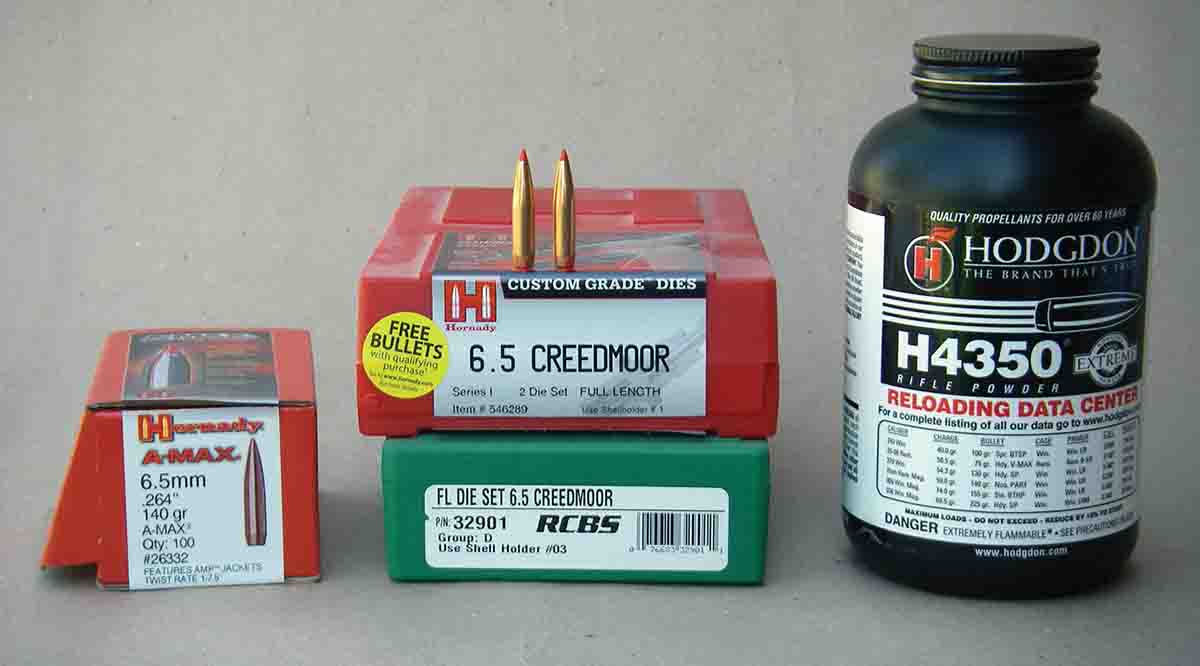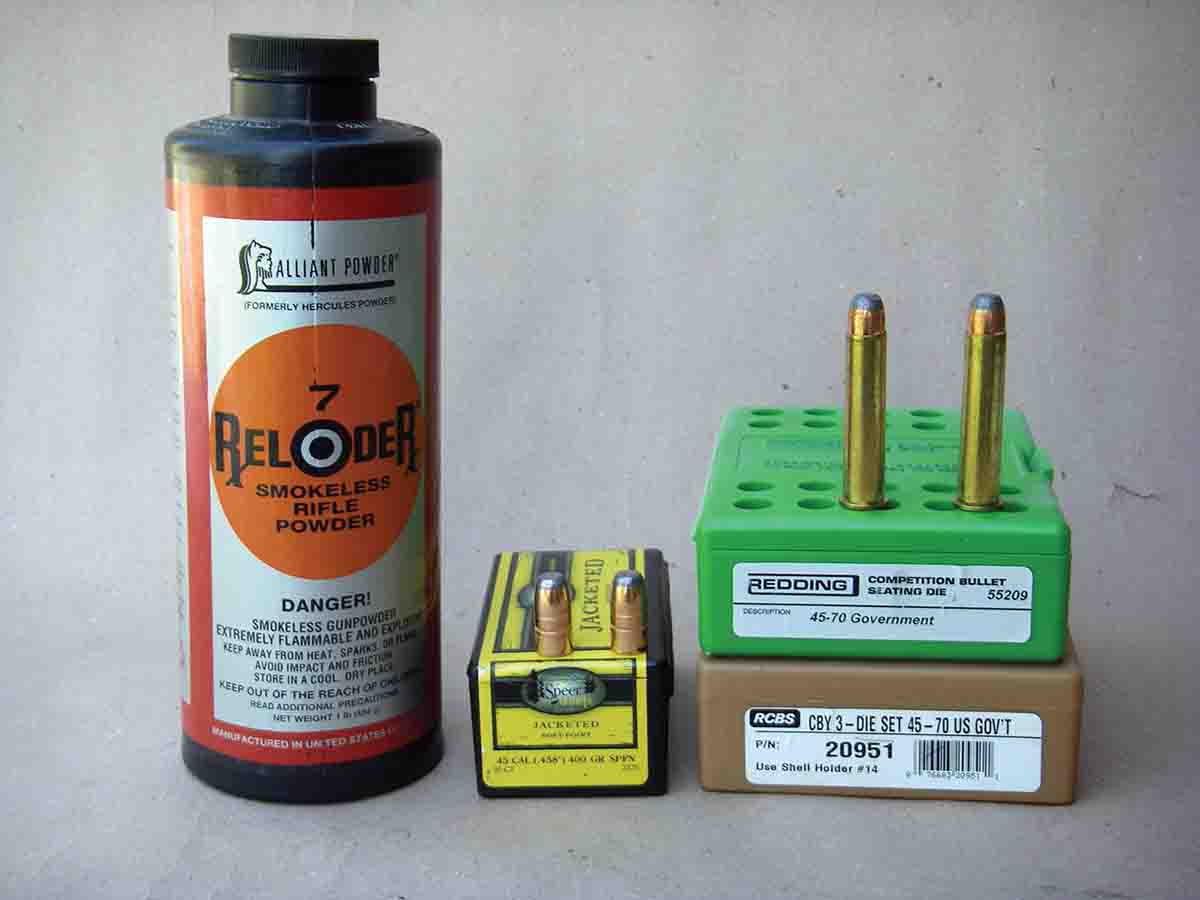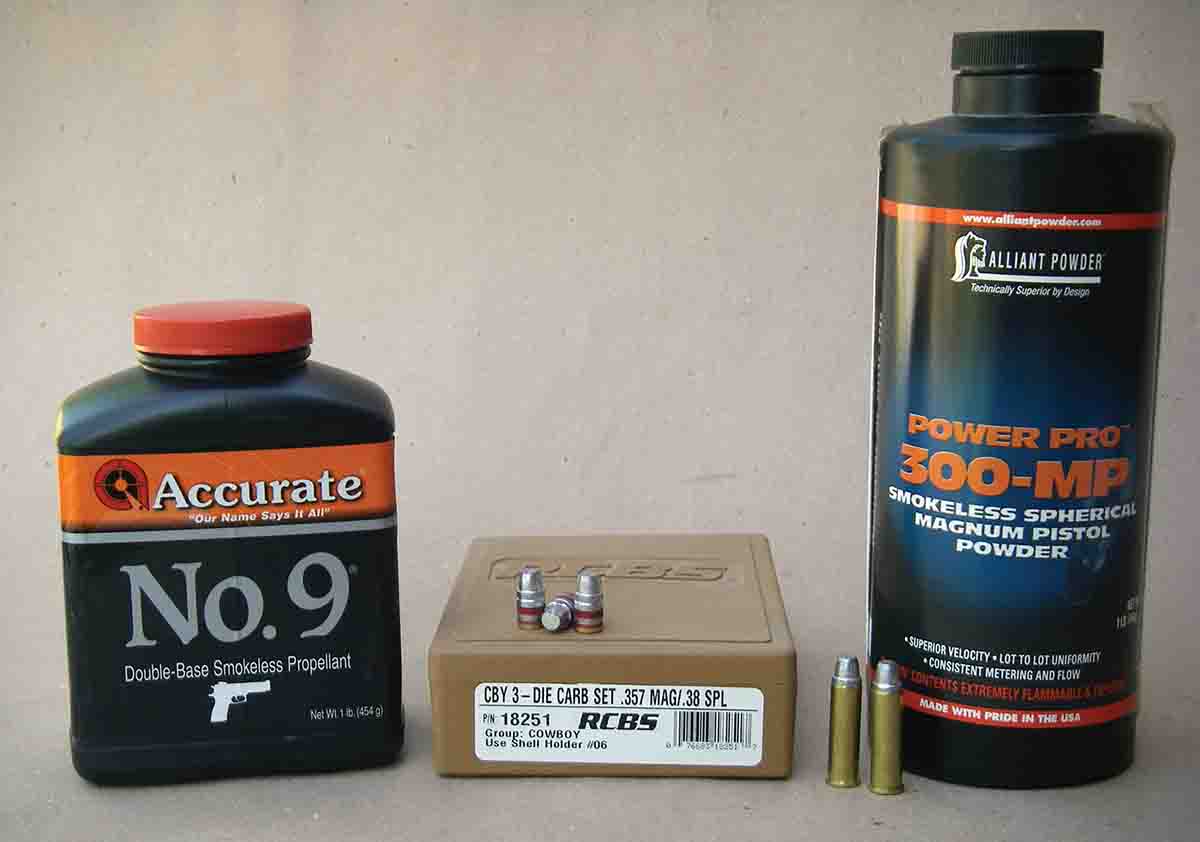Bullets & Brass
Duplicating 6.5 Creedmoor Factory Loads
column By: Brian Pearce | October, 18

I am relatively new to handloading and would like to exactly duplicate the above factory load. I have a quantity of 140-grain A-MAX bullets on hand and am ready to load. When I first began using this caliber, it seems to me that factory ammunition boxes had the powder and charge weight printed on the box. But the loads that I have been purchasing lately do not list any data. I suspect that they contain Hodgdon Varget powder, but am not sure. Do you know what the above factory loads contain in powder and charge weight? Any help that you can offer will be greatly appreciated. – B.Z., via e-mail
A: Hornady has now discontinued loading the 140-grain A-MAX bullet in 6.5 Creedmoor factory loads. It has been replaced with the 140-grain ELD Match bullet at 2,710 fps. Since you have a quantity of 140-grain A-MAX bullets on hand, you can duplicate original factory loads by using 41.5 grains of Hodgdon 4350 powder ignited with Federal Gold Medal 210M primers. Overall cartridge length is 2.810 inches.
Partitions for Elk

Having read your articles for many years, it is clear that you have grown up in the Rocky Mountains and have much experience hunting elk. I am seeking your advice for bullet selection. Here in Pennsylvania I have used the 140-grain Nosler Partition bullet on whitetail deer, but at a “reduced” velocity of 2,900 fps. My rifle shoots them well and they have always given fine terminal performance.
I do have on hand both 160 and 175-grain Partition bullets, both of which also shoot well in my rifle. I know that there are several companies offering solid copper expanding bullets, bonded bullets and other high tech designs with remarkably high ballistic coefficients, etc. I am not sure what version I should choose for elk. I doubt that I will attempt any shots beyond 250 to 300 yards. Any suggestions would be appreciated. – J.D., via e-mail
A: The Nosler Partition is a proven big-game bullet that will work perfectly on elk. Since you have bullets on hand and they are shooting well in your rifle, there is no need to search further for a premium hunting bullet. I would opt for either the 160- or 175-grain version pushed to 3,100 or 2,975 fps, respectively. The former will offer a slightly flatter trajectory at normal hunting distances, and the latter will offer deeper penetration. Regardless of your choice, either will deliver fine performance on elk at the distances you mention. Good luck hunting and I hope you enjoy the West.
.45-70 Powder Variance

A: I actually get this question fairly often, as it is a problem that has been observed with many different calibers and powder combinations. It is difficult for manufacturers to duplicate exact burn rates with each lot number of powder, so anytime a powder lot number is changed you might, but not always, see different pressure curves and velocities. Some powder companies hold this lot-to-lot consistency to smaller “tolerance” figures than others.
In your case, you will need to increase the powder charge until you duplicate your original velocity. My best guess is that this will be around a 2.0- to 2.5-grain increase.
Cast Bullet Resource

A: Try Matt’s Bullets (870-856-6788 or mattsbullets.com). I have found his pricing reasonable, quality is top notch, and you should be pleased with the accuracy and performance of his bullets.
Use 18.5 grains of Alliant Power Pro for over 1,500 fps from most revolvers with a 6- to 7.5-inch barrel. Switching to Accurate No. 9, maximum loads will fall between 14.5 and 15.0 grains. Depending on powder lot performance, velocity will usually reach between 1,400 and 1,450 fps. Both Alliant Power Pro 300-MP and Accurate No. 9 powder will yield the best results using a standard nonmagnum primer, resulting in lower extreme spreads and lower pressures. If a magnum primer is substituted, the above charge weights must be reduced.
.327 Federal Expander Dies
Q: I am having difficulty seating cast bullets in the .327 Federal Magnum. I am using RCBS dies, with the expander being what customer service tells me is an “M die.” The problem that I am having is that commercial cast bullets are running between .313 and .314 inch and are a tight fit in the mouth of expanded cases. In case you are not familiar with this die, it simply will not expand the case mouth adequately. The further that the expander is turned down into the case mouth, it just lengthens the amount of case mouth flare rather than opening the mouth wider. Sometimes the case mouth either shaves lead when the bullet is seated, or the case gets damaged in the process. Jacketed bullets measuring .312 inch seat fine but cast bullets are a problem. Can you suggest a solution? – K.S., Lewiston ID
A: I have experience with the RCBS “M” die and have seen the very problems you describe. I suggest contacting RCBS to return it for correction, naturally with a detailed description of the problem.
Another option is to order a neck expander die from Lee Precision. It offers the correct expander ball size and neck expansion profile to correspond with cast bullets. Lee also offers a Universal Case Expanding Die that is useful for neck expansion for many calibers that do not come standard with a neck expanding die and assists with seating cast bullets.


